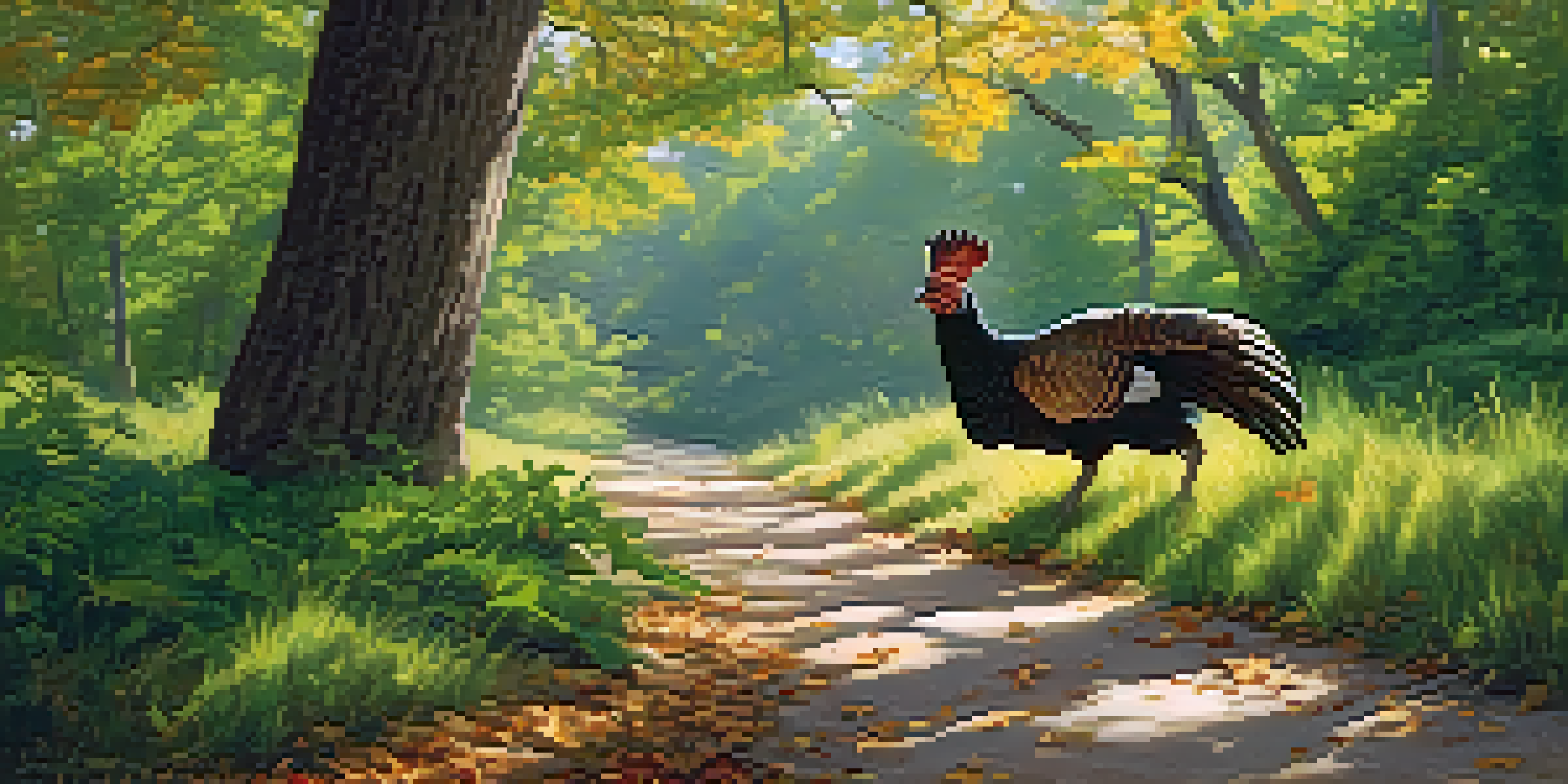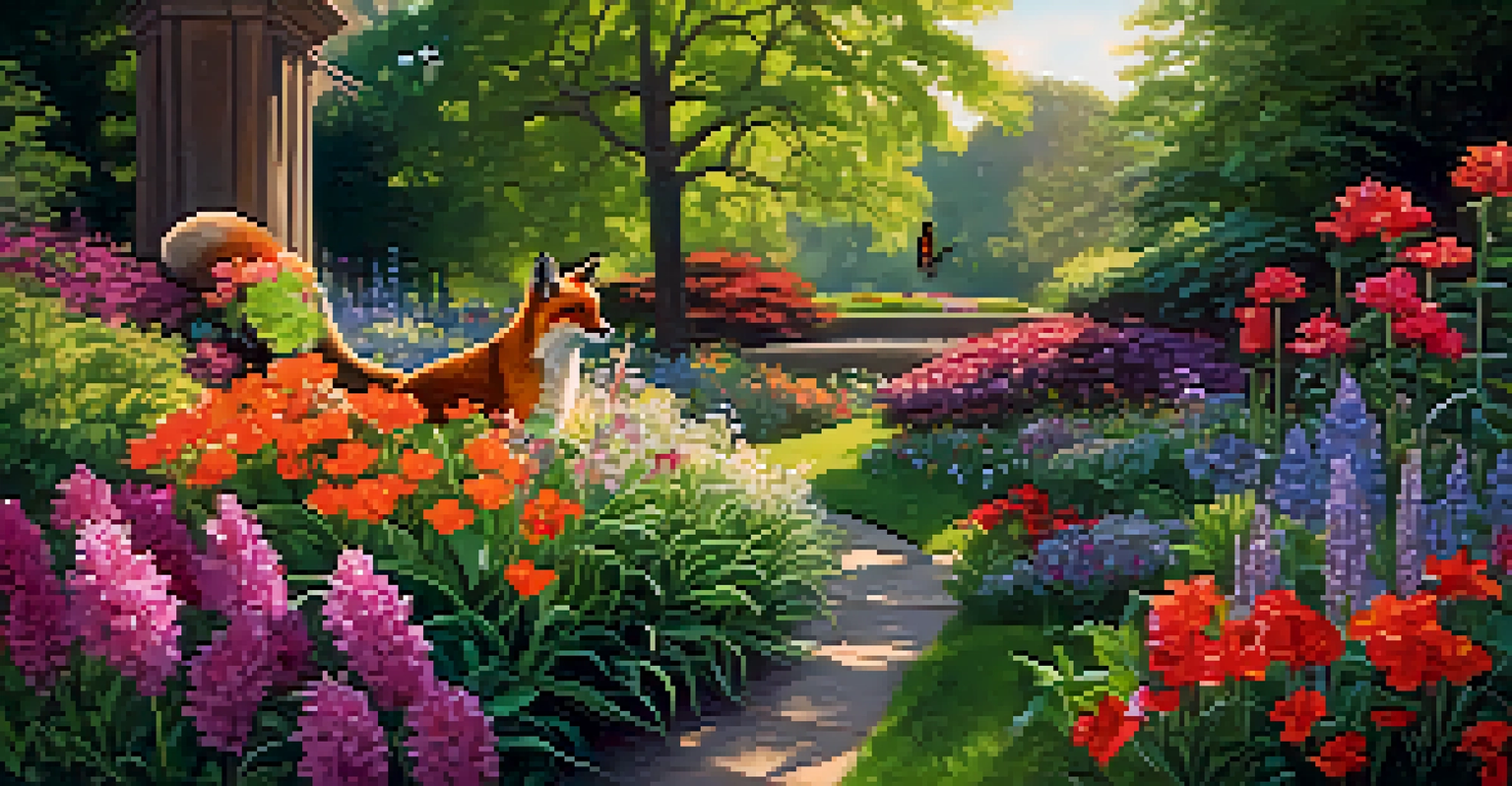Wildlife Watching in Missouri State Parks: A Nature Guide

Why Missouri State Parks Are Wildlife Watching Hotspots
Missouri State Parks boast a rich tapestry of diverse habitats, making them prime locations for wildlife watching. From dense forests to serene lakes, these parks provide homes to various species, including deer, eagles, and even bobcats. The variety of ecosystems ensures that visitors can experience a wide range of wildlife, each with its unique charm and behavior.
In every walk with nature one receives far more than he seeks.
The Missouri River, winding through several parks, offers an ideal setting for birdwatchers, particularly during migratory seasons. Here, you can spot everything from herons to migratory songbirds. The combination of water, forest, and open fields creates a vibrant scene that beckons wildlife enthusiasts year-round.
Moreover, the commitment of Missouri State Parks to conservation and habitat preservation enhances the chances of spotting wildlife. With dedicated programs aimed at protecting native species, visitors can enjoy a more authentic wildlife experience while knowing they are supporting these efforts.
Top Parks for Wildlife Watching in Missouri
When it comes to wildlife watching, some parks stand out from the rest. For instance, the stunning Ha Ha Tonka State Park offers a picturesque backdrop with its unique geological features and abundant wildlife. Here, visitors can often see wild turkey and deer roaming the scenic trails, especially during the early morning or late afternoon.

Another must-visit is the Missouri Botanical Garden, which, while primarily a botanical space, is also home to diverse wildlife. As you walk through the garden's expansive grounds, keep an eye out for butterflies, birds, and even the occasional fox. This blend of flora and fauna makes for an engaging and peaceful wildlife watching experience.
Missouri Parks: Wildlife Richness
Missouri State Parks feature diverse habitats that attract a wide variety of wildlife, making them ideal for nature enthusiasts.
Lastly, don't overlook the sprawling Mark Twain State Park, where the dense woodlands and open fields create an excellent habitat for various species. Birdwatchers will particularly enjoy the park's many trails that lead to prime viewing spots for observing songbirds during migration periods.
Best Times of Year for Wildlife Watching in Missouri
Timing is crucial when it comes to wildlife watching. In Missouri, spring and fall are particularly vibrant seasons, as many animals are more active during these times. Spring brings the arrival of migratory birds, while fall is characterized by the beautiful sight of deer preparing for winter, often spotted in the early morning hours or at dusk.
The wildlife and wilderness are not just something to be seen; they are something to be experienced.
Summer can also be rewarding, especially for those interested in observing young wildlife. Many animals give birth in late spring, meaning that by summer, visitors may see fawns, fox kits, and other young animals venturing out with their parents. This season is perfect for photographers seeking to capture the innocence of youth in the wild.
Winter, though less popular, offers a different charm. Certain animals, like bald eagles, become more visible as they gather near open water. If you're willing to brave the cold, winter wildlife watching can lead to unique encounters, making it an unexpected treasure for those who seek it.
Wildlife Watching Etiquette: Best Practices
While observing wildlife is thrilling, it's essential to do so respectfully. Maintaining a safe distance is crucial, as getting too close can stress animals or alter their natural behaviors. Using binoculars or a zoom lens can enhance your viewing experience without intruding on their space.
Additionally, it's vital to stay on marked trails to protect both your safety and the wildlife's habitat. Venturing off-path can disturb nesting sites and other sensitive areas, which could have lasting impacts on local ecosystems. By following designated trails, you help preserve these environments for future visitors and wildlife alike.
Best Times for Wildlife Watching
Spring and fall are prime seasons for wildlife watching in Missouri, with increased animal activity during these times.
Finally, remember to leave no trace. Carry out any litter and avoid feeding animals, as this can disrupt their natural foraging habits. By practicing these simple but effective guidelines, you can contribute to the overall health of Missouri's wildlife and ensure that the beauty of nature remains intact for years to come.
Essential Gear for Wildlife Watching Adventures
Having the right gear can significantly enhance your wildlife watching experience. A pair of quality binoculars is a must-have, allowing you to observe distant animals without disturbing them. Look for binoculars with a magnification of at least 8x and a wide field of view for the best experience.
Comfortable walking shoes are another essential item, as you’ll likely be spending a lot of time on your feet while exploring trails. Opt for sturdy, waterproof footwear if you plan to venture near lakes or damp areas. Remember, comfort is key to fully enjoy your time in nature.
Lastly, consider bringing a field guide or a wildlife app to help identify species you encounter. This can turn your adventure into a learning experience, deepening your appreciation for Missouri's natural wonders. Plus, sharing your findings with friends and family adds an extra layer of joy to your wildlife watching trips.
Family-Friendly Wildlife Watching Activities
Wildlife watching is a fantastic family activity that can create lasting memories. Many Missouri State Parks offer guided nature walks, which provide valuable insights into local wildlife and their habitats. These walks can be particularly engaging for kids, as knowledgeable guides share fascinating stories and fun facts about the animals you might encounter.
Another enjoyable activity is setting up a wildlife observation station at your campsite or picnic spot. Bring along some birdseed or fruit, and see what animals come to visit. This hands-on approach can teach children about different species and their behaviors while fostering a deeper connection to nature.
Respectful Wildlife Observation
Practicing wildlife watching etiquette, such as maintaining distance and staying on trails, is essential for protecting both animals and their habitats.
Lastly, consider starting a wildlife journal with your family. Documenting sightings, sketches, and notes about your experiences can turn each visit into a unique adventure. This fun and educational activity encourages kids to observe their surroundings more keenly, enhancing their appreciation for Missouri's diverse wildlife.
Conservation Efforts and Wildlife Protection in Missouri
Missouri is home to numerous conservation initiatives aimed at protecting its wildlife and natural habitats. Organizations and state parks work tirelessly to restore ecosystems and educate the public about the importance of biodiversity. By visiting these parks, you support these efforts, helping to ensure that wildlife continues to thrive.
Many parks also offer volunteer opportunities for those looking to get involved directly with conservation efforts. Whether it’s participating in clean-up days or helping with habitat restoration projects, these initiatives allow you to give back while enjoying the great outdoors. It's a rewarding way to contribute to the preservation of Missouri's wildlife.

Additionally, staying informed about local wildlife issues can help you become a better advocate for conservation. By understanding the challenges faced by different species, you can make informed decisions in your daily life that support sustainability and biodiversity, ensuring future generations can enjoy the beauty of Missouri's wildlife.